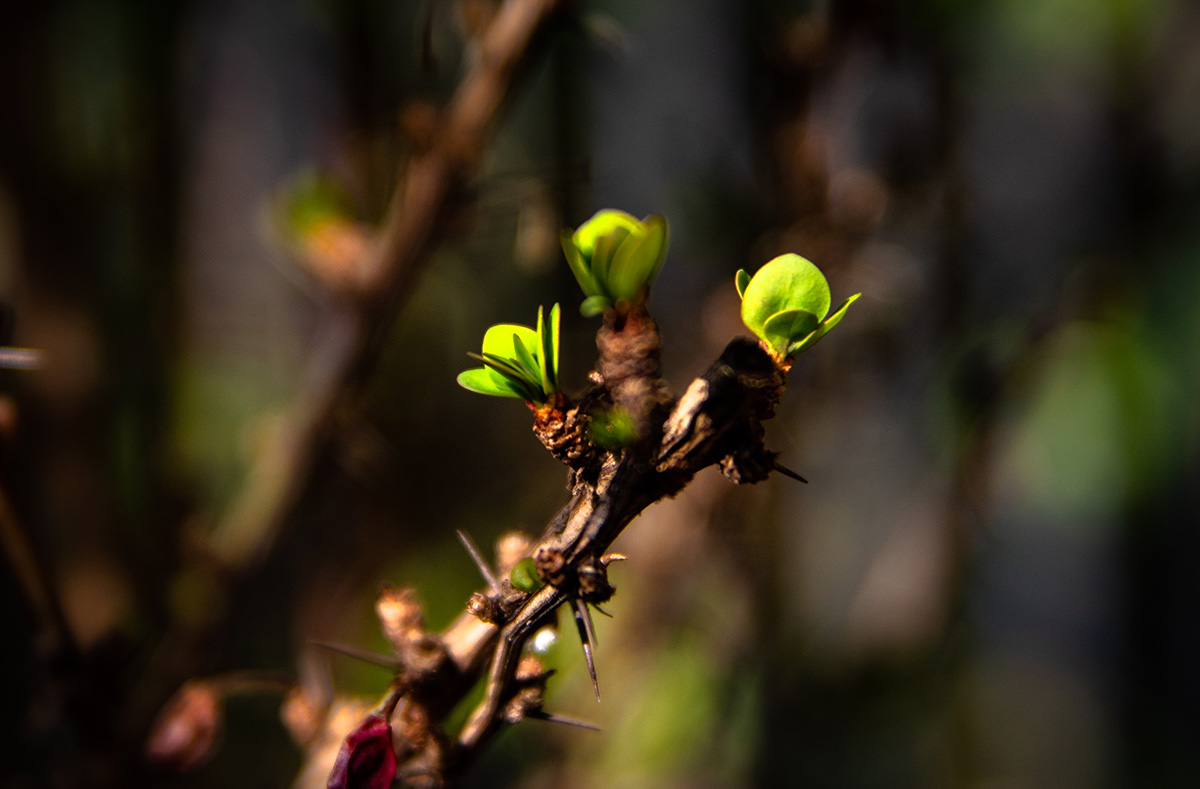Have you ever met a phenologist? As defined by the Merriam-Webster dictionary, phenology is “the study of cyclic and seasonal natural phenomena, especially in relation to climate and plant and animal life.” The USA National Phenology Network (USA-NPN) is an organization comprised of, among others, research scientists, educators, and thousands of volunteer observers who are dedicated to documenting phenological events. If you’ve prepared your nest boxes for spring breeding season or, perhaps, you’re anticipating emergence of the first bluebonnets you may be something of a phenologist as well.
As we approach spring, it’s is an exciting time as all manner of flora stirs to life. We all know the usual time Texas wildflowers begin making their appearance, tours are planned and cameras readied. But what about Texas tree and shrub leaf out? Over the next several weeks, naked branches will become adorned with vibrant green buds, tender new leaves, and, depending on the tree or shrub, enchanting blooms. According to the USA-NPN “Status of Spring” update posted on February 1, 2021: “Spring leaf out has started to arrive in southern states. Spring is on time to one week late in Florida and southern Texas, and one-two weeks early in the middle and northern part of Southeast states.”
As we write this on a classically beautiful Texas day with a brilliant blue sky and the warmth of the sun cutting through a lingering winter chill, it’s hard to not feel a spring-is-coming buzz in the air. Of course, Texas being Texas, we can still expect the odd wintry days now and then until spring really hits its stride, but we can still expect leaf out. The following are just a few Texas trees and shrubs and their approximate times for leaf out.
Elbow Bush
Also known as Spring Herald because it is among the earliest to leaf out, Elbow Bush twigs grow at 90-degee angles from the branches (hence the “elbow” in Elbow Bush). Look for its bare twigs to begin showing small clusters of yellow flowers in February and March. Not familiar with Elbow Bush? This native Texas shrub can grow to 5-10 feet in size, attracts birds and butterflies, and is common in open woodlands, brushy areas, and near streams. Learn more about this seasonal harbinger from Lady Bird Johnson Wildflower Center.
Texas Persimmon
Look for Texas Persimmon leaf out beginning in February accompanied by the bloom of small, whitish, bell-shaped flowers. Texas Persimmons are dioecious—that is, male and female flowers are on separate trees. According to the Wildflower Center, “You can tell male trees from female trees because male flowers are smaller and appear in small clusters, while the larger female flower appears alone.” Further, only the female trees will ultimately produce fruit.
Live Oak
Oak wilt is a scourge in Texas. Decimating the state’s prized oaks. Texas A&M Forest Service reports the disease has killed more than 1 million trees in 76 Central Texas counties alone. An infected tree is ultimately rendered barren and irrevocably dying while interconnected roots can spread the disease to other nearby trees. Live oaks are particularly susceptible. Not surprisingly, the sight of a leafless oak can strike fear into the hearts of landowners. And this time of year, in particular, as temperatures slowly warm up, can be an emotional rollercoaster as live oaks begin shedding their leaves preparing to bud out new leaves. Typically, this leaf drop begins in March, but live oaks are highly individualistic and, as described by the Texas Plant Disease Diagnostic Lab (TPDDL), “trees may be different genetically, making one shed and produce new leaves quicker than another. It is also possible that there are environmental and/or physical factors that influences a particular plant to shed quicker.” You might see leaf drop in February. The annual Texas live oak leaf drop is a “phenomenon” that “we live with in Texas,” TPDDL explains, and is not caused by disease, but, rather, is “part of the natural life cycle of the tree.” If general assurances aren’t enough, TPPDL offers a few things to check on the tree to (hopefully) ease your mind. Learn more on the Annual Live Oak Leaf Drop.
Pecan
While leaf out in pecan trees doesn’t start until April or even May in many locations, thanks to our warmer climate in Texas you may see budding in March. Further, as described in “When Do Pecan Trees Leaf Out,” the “leaves eventually grow up to 12 to 20 inches in length during the growing season, and resemble fern leaves. Each leaf contains 11 to 17 leaflets. Once the leaves appear, small yellow flowers bloom next, helping to pollinate the tree so that it produces fruit if the tree is old enough.”
Hackberry
Much maligned as a “trash tree,” the hackberry is actually beneficial for wildlife that eat the berries. Moreover, hackberry leaves are a “favorite larval food of hordes of butterflies and moths” as noted in “Pull It or Plant It: Hackberry.” While hackberry leaf out may not seem particularly thrilling, hordes of butterflies and moths might beg to differ. The U.S. Department of Agriculture says hackberry “flowers are small, greenish-yellow, and emerge in April and May with the leaves.”
Why not channel your inner phenologist and monitor leaf out on your property this spring?
Photo by Piotr Makowski on Unsplash









